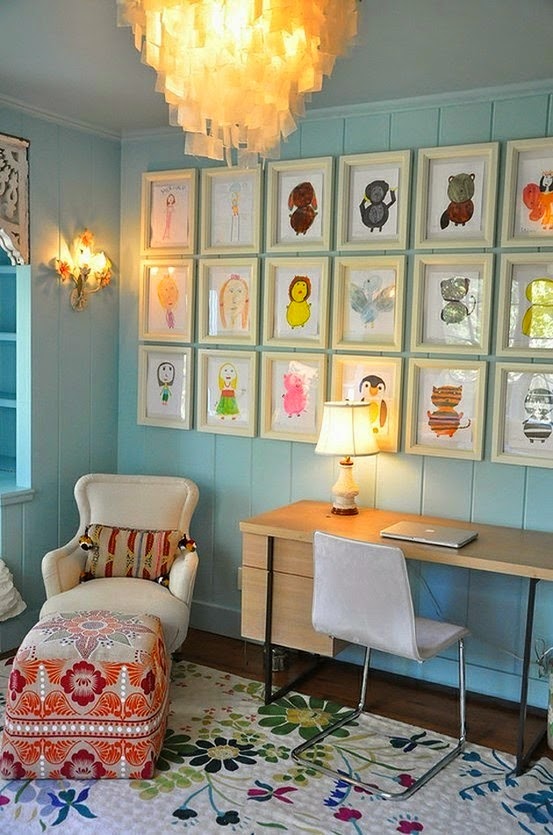.jpg) |
| Mr A loves to paint |
Acrylic painting is a fantastically rewarding hobby and is popular amongst beginner painters including young kids and children as it's a great medium to us as well as those who have been painting for years. It’s fast drying, can be mixed with thinners and very versatile. During my college and University years studying various art courses I thought I would share some tips on how to get the best out of this great medium.
Blending
Blending can be tricky business when it comes to acrylics as the paint dries very quickly. Act quickly, however, and you should be able to get the desired effect.
Layering
A benefit of the quick drying nature of acrylics is that the fact that layering paint on top does not disturb the original paint as with watercolours.
Mix Using a Palette Knife
One of the plus points of using a palette knife rather than your brush to mix colours is that you do not get surplus paint hidden in your brush which will surprise you on the canvas. You could also use a palette knife to paint with to create interesting textures and offer a different feel to a painting.
Invest in decent Equipment
Purchasing professional standard acrylic sets will get you excited about starting this hobby or taking it to the next level. Also by providing your children with decent equipment you are showing them that you care about their creative pursuits as well as teaching them how to look after the equipment properly and hopefully providing years of creative fun.
Purchasing professional standard acrylic sets will get you excited about starting this hobby or taking it to the next level. Also by providing your children with decent equipment you are showing them that you care about their creative pursuits as well as teaching them how to look after the equipment properly and hopefully providing years of creative fun.
Avoid Stacking Acrylic Paintings
Acrylic paint dries quickly, however, the paint does stick to itself if placed together. So, if you do have to stack them together make sure you place a sheet of paper in between.
Transparent or Opaque
The beauty of acrylic comes in its versatility. You can water down to give watercolour ‘wash’ effect of apply them in their original form to give a more opaque effect. Use both effects as well as the thick palette knife application discussed above to give a unique look to your painting.
Experiment with Different Surfaces
Acrylics can be applied to most surfaces apart from waxy ones. Canvas is often a favourite with acrylic painting, but you could also try wood, paper or even matt plastic. Also try using different ways of applying such as sponging, scratch strokes, using crinkled plastic sheets. You may be inspired to go in a new direction.
 |
| Have fun displaying artwork in the home (image) |
I love to display Mr A's artwork, it's always so fun and colourful so why not allocated a place in the home to show it off. Our fridge is covered with work as well as another wall in the kitchen and I know it fills him with a sense of pride seeing his work on the wall.
Keep Getting Tips
YouTube channels such as Lachri Fine Art regularly upload videos to give fantastic tips to artists of all media. Subscribe to keep getting inspiration and tips.
Keep Getting Tips
YouTube channels such as Lachri Fine Art regularly upload videos to give fantastic tips to artists of all media. Subscribe to keep getting inspiration and tips.
This is a collaborative post
.jpg)

I'm really looking forward to getting all messy with paints and crafts with my baby boy when he's old enough - great tips!
ReplyDeleteI don't have children so wouldn't come across acrylic paints, having said that I don't think I'm too old to use them myself! Lol
ReplyDelete